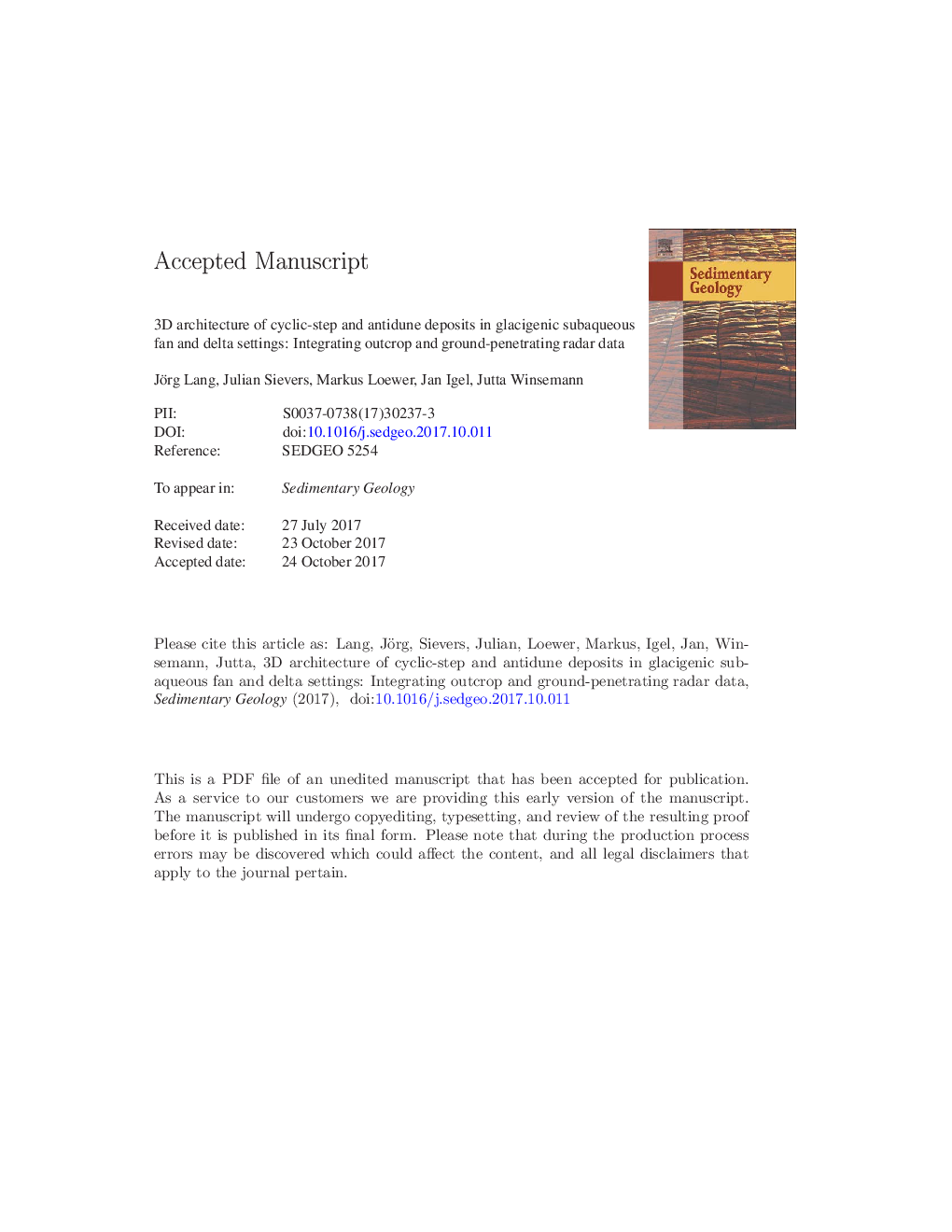| Article ID | Journal | Published Year | Pages | File Type |
|---|---|---|---|---|
| 8908584 | Sedimentary Geology | 2017 | 58 Pages |
Abstract
Subaqueous ice-contact fan deposits include deposits of progradational scour fills, isolated hydraulic jumps, antidunes and (humpback) dunes. The gravel-rich fan succession consists of vertical stacks of laterally amalgamated pseudo-sheets, indicating deposition by pulses of waning supercritical flows under high aggradation rates. The GPR sections reveal the large-scale architecture of the sand-rich fan succession, which is characterised by lobe elements with basal erosional surfaces associated with scours filled with backsets related to hydraulic jumps, passing upwards and downflow into deposits of antidunes and (humpback) dunes. The recurrent facies architecture of the lobe elements and their prograding and retrograding stacking pattern are interpreted as related to autogenic flow morphodynamics.
Related Topics
Physical Sciences and Engineering
Earth and Planetary Sciences
Earth-Surface Processes
Authors
Jörg Lang, Julian Sievers, Markus Loewer, Jan Igel, Jutta Winsemann,
